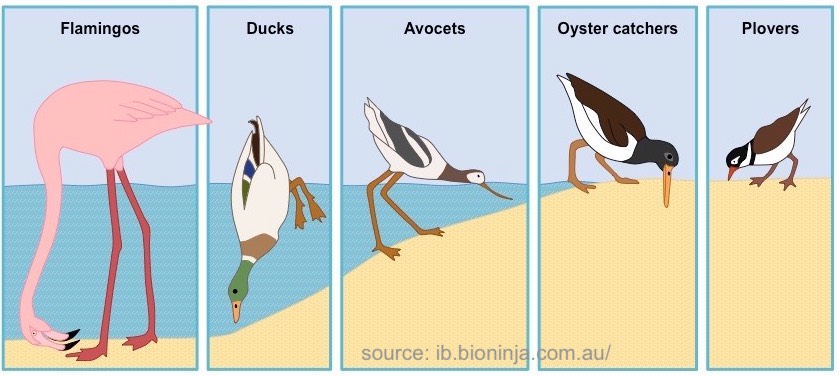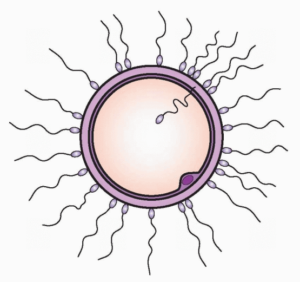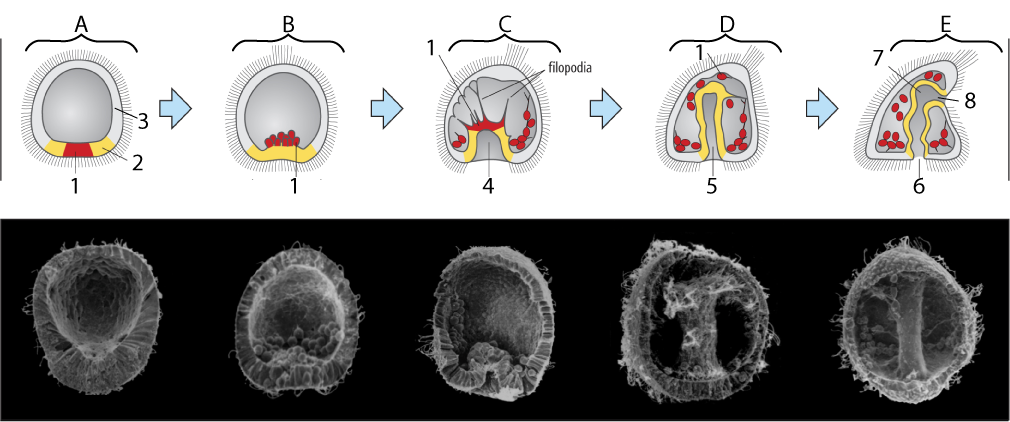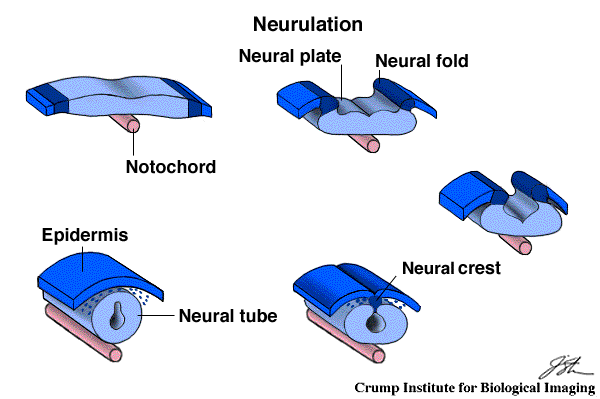Looking for a student learning guide? It’s linked in the main menu for your course. Use the “Courses” menu above.
1. Introduction
If you think about it biologically, the story of your life is quite astonishing. Click through the slides below.
[qwiz summary=”false”]
[h]The story of you
[i]Biohaiku
Everyone’s story:
From a single zygote to
Vast complexity
[q] You started life as a single, fertilized egg cell.
[q] After a few weeks of development involving processes such as cell division, programmed cell death, and gene activation leading to cellular differentiation, you looked something like this:
[q] And then, a few decades, later, you might find yourself looking like this!
[x]How does this happen? How did the cells in your face “know” how to assume the pattern and form that makes you look the way that you do? How did your arms, which grew with no connection to one another as they extended from your trunk, wind up being so close to the same length? This is what we’re going to address in this module.
Continue reading below.
[/qwiz]
2. Major Processes and Milestones in Development
As we develop from a single fertilized egg into our adult form, four major processes are at work.
- Growth: A human egg cell is about 0.1mm in diameter. I’m an average-sized male (about 177 centimeters tall). That’s a 17,700 times increase in height. My volume is millions of times greater than it was when I was a zygote. Most of that growth comes through adding new cells. The average number of cells in the human body has been estimated to be 37 trillion (37,000,000,000,000), though some growth also results from the deposition of extracellular materials (like the materials that make up bone or cartilage).
- Determination: at a certain point in a cell’s life, it becomes destined for a specific fate, even though you might not be able to see that change in a cell’s shape or form. In this case, fate means becoming a certain type of cell. As we’ll see, determination involves responding to transcription factors that turn certain genes on, and others off.
- Differentiation: Determination leads to differentiation. Through differentiation, cells specialize in form and function, developing into nerve cells, muscle cells, skin cells, etc.
-

Morphogenesis Morphogenesis: Development involves cells growing and moving in a way that creates the three-dimensional form of the organism. You can think of morphogenesis as occurring on several levels. Almost all animals, for example, have a head, trunk, and posterior region. How do these regions form? On another level, what processes lead flamingos, ducks, avocets, Oystercatchers, and plovers to develop their uniquely shaped (and uniquely adapted) bodies and beaks?
3. Some Highlights of Embryonic Development
Let’s see these processes at work in some early developmental milestones.

Development begins with fertilization. Fertilization converts haploid gametes into a diploid zygote. It also activates the formerly metabolically dormant egg.
Following fertilization is a phase called cleavage. Note that the images below show this process occurring in a sea urchin, an organism often used in studies of development.

The fertilized egg repeatedly divides, but in a way that involves a truncated version of the cell cycle: the S phase (during which DNA is replicated) is followed by G2 (growth of structures required for division), and then the M phase, during which chromosomes separate and the cell divides. During these cleavage divisions, there’s no G1, which is when cells increase in cell size. In image 2, above, you can see the embryo with four cells. Shortly thereafter, the first morphogenetic movements occur, as the cells position themselves in such a way as to create a fluid-filled ball of cells (3 and 4). That ball of cells is called a blastula or, in mammals, a blastocyst. By the end of the cleavage phase, the embryo consists of many small cells, and it has vastly increased its amount of DNA.
Next comes gastrulation, a series of cell movements that results in a massive reorganization of the embryo into a multilayered organism. Again, these images are from the development of a sea urchin.

What follows is a simplified description of what’s shown above. Letter “A” indicates the blastula stage (which is where we left off in number 4 of figure 2 above). While the cells forming the blastula look similar, they’ve already started to become genetically determined. That means that their developmental fate — the tissues that they’ll develop into — has been set, even though that might be difficult or impossible to tell just by looking. The cells, in other words, are determined, but not yet differentiated.
You can see this at work as the blastula (A) develops into what’s called a gastrula — which is the embryonic form shown at “E.” The cells indicated by number 1, colored red, will become a type of embryonic tissue called mesoderm. In humans, mesoderm develops into organs like the heart, kidneys, bones, and muscles. In diagrams B, C, D, and E above, you can see these mesodermal cells moving into the fluid that fills the blastula.
The cells at 2 (colored yellow) are also determined: they’ll become the endoderm, a tissue that gives rise to the gut and the lungs (and other structures). The endoderm starts as an invagination into the blastula (at “4” in diagram “C”). The cavity deepens (“5”) and eventually, in diagram “E,” the roof of the cavity reaches the other end of the developing organism. At that point, a mouth forms (at “8”). This leaves a gut (7) or digestive tract, lined by endoderm. The original opening develops into the anus (6). Note that in many animal phyla, this pattern is reversed: the opening into the blastula becomes the mouth, and the second opening becomes the anus.
Finally, look back to diagram “A.” Number 3 indicates all of the cells that are not destined to become mesoderm or endoderm. These cells remain on the outside where they form the ectoderm. Later in development, ectodermal cells will develop into structures like skin, the brain, and the rest of the nervous system.
Here’s a video showing gastrulation in a sea urchin embryo, vastly sped up.
Gastrulation is a type of morphogenesis. Morphogenesis continues as the precise form of the organism starts to develop. To see this, let’s shift our focus from sea urchins to frogs, and from the entire organism to just one feature: the neural tube. The neural tube is the hollow tube that in humans and other chordates develops into the brain and the spinal cord.

The process works like this. The notochord, a rod made of cartilage that is a developmental precursor to the vertebral column, sends chemical signals to the nearby ectoderm. In response, genes are activated in the tissues in the ectoderm causing changes in the growth pattern: the tissues move in a way that forms a neural plate, which becomes deeper and deeper until the ends fold in upon themselves, forming a tube. Later, where the head will form, the tube enlarges, developing into the brain.
The video below shows a frog zygote developing into a gastrula, and then forming a neural tube. As you watch, focus on how the ectoderm folds in upon itself. You can’t see the entire process of neural tube formation (you’d need to cut the embryo in half to do that), but you can see what it looks like from the outside.
4. Development: Key Patterns and Processes Quiz
[qwiz random = “true” qrecord_id=”sciencemusicvideosMeister1961-M25, Development Patterns and Processes”]
[h]Development: Key processes and patterns
[i]
[q] This is the most straightforward aspect of development. It’s about the increase in size that occurs from the zygote to the organism’s adult form. [hangman].
[c]IGdyb3d0aA==[Qq]
[f]IEdyZWF0IQ==[Qq]
[q] During development, a cell becomes committed to a certain fate as specific genes are activated. At the same time, there’s no morphological change. This process is called [hangman].
[c]IGRldGVybWluYXRpb24=[Qq]
[f]IEdyZWF0IQ==[Qq]
[q] A cell’s morphology changes. This is called[hangman].
[c]IGRpZmZlcmVudGlhdGlvbg==[Qq]
[f]IEdvb2Qh[Qq]
[q] Creating the three-dimensional form of the organism:[hangman].
[c]IG1vcnBob2dlbmVzaXM=[Qq]
[f]IEdvb2Qh[Qq]
[q] Fertilization takes [hangman] gametes and combines them to create a diploid [hangman]. It also activates the formerly [hangman] dormant egg.
[c]IGhhcGxvaWQ=[Qq]
[f]IEdvb2Qh[Qq]
[c]IHp5Z290ZQ==[Qq]
[f]IEdyZWF0IQ==[Qq]
[c]IG1ldGFib2xpY2FsbHk=[Qq]
[f]IEdyZWF0IQ==[Qq]
[q] The process shown below (especially in photos 2 and 3, is called [hangman]. By the end of the process, the embryo consists of many small [hangman], and it has vastly increased its amount of [hangman].
[c]IGNsZWF2YWdl[Qq]
[f]IEdvb2Qh[Qq]
[c]IGNlbGxz[Qq]
[f]IEdyZWF0IQ==[Qq]
[c]IEROQQ==[Qq]
[f]IEdyZWF0IQ==[Qq]
[q] The fluid-filled ball of cells shown in photograph number 4 is called a [hangman].
[c]IGJsYXN0dWxh[Qq]
[f]IEV4Y2VsbGVudCE=[Qq]
[q] In the diagram below, the cells that will become the ectoderm are shown at
[textentry single_char=”true”]
[c]ID M=[Qq]
[f]IEV4Y2VsbGVudC4gTnVtYmVyICYjODIyMDszJiM4MjIxOyBpcyB0aGUgZWN0b2Rlcm0u[Qq]
[c]IEVudGVyIHdvcmQ=[Qq]
[f]IE5vLCB0aGF0JiM4MjE3O3Mgbm90IGNvcnJlY3Qu[Qq]
[c]ICo=[Qq]
[f]IE5vLiBIZXJlJiM4MjE3O3MgYSBoaW50OiB0aGUgZWN0b2Rlcm0gaXMgdGhlIG91dGVybW9zdCBsYXllciBvZiBjZWxscy4=[Qq]
[q] In the diagram below, the cells that will become the mesoderm are shown at
[textentry single_char=”true”]
[c]ID E=[Qq]
[f]IE5pY2Ugam9iLiBOdW1iZXIgJiM4MjIwOzEmIzgyMjE7IGlzIHRoZSBtZXNvZGVybS4=[Qq]
[c]IEVudGVyIHdvcmQ=[Qq]
[f]IE5vLg==[Qq]
[c]ICo=[Qq]
[f]IE5vLiBIZXJlJiM4MjE3O3MgYSBoaW50LiBUaGUgbWVzb2Rlcm0gaXMgYSBtaWRkbGUgbGF5ZXIgb2YgY2VsbHMsIGJldHdlZW4gdGhlIGVjdG9kZXJtIGFuZCB0aGUgZW5kb2Rlcm0u[Qq]
[q] In the diagram below, the cells that will become the endoderm are shown at
[textentry single_char=”true”]
[c]ID I=[Qq]
[f]IEV4Y2VsbGVudC4gTnVtYmVyICYjODIyMDsyJiM4MjIxOyBpcyB0aGUgZW5kb2Rlcm0u[Qq]
[c]IEVudGVyIHdvcmQ=[Qq]
[f]IFNvcnJ5LCB0aGF0JiM4MjE3O3Mgbm90IGNvcnJlY3Qu[Qq]
[c]ICo=[Qq]
[f]IE5vLiBIZXJlJiM4MjE3O3MgYSBoaW50LiBUaGUgZW5kb2Rlcm0gaXMgdGhlIGlubmVybW9zdCBsYXllciBvZiBjZWxscy4gSXQgd2lsbCBiZWNvbWUgdGhlIGd1dCwgd2hpY2ggaXMgc2hvd24gYXQgJiM4MjIwOzcuJiM4MjIxOw==[Qq]
[q] In the diagram below, which letter shows the blastula stage?
[textentry single_char=”true”]
[c]IE E=[Qq]
[f]IE5pY2Ugam9iLiBMZXR0ZXIgJiM4MjIwO0EmIzgyMjE7IGlzIGEgYmxhc3R1bGEu[Qq]
[c]IEVudGVyIHdvcmQ=[Qq]
[f]IFNvcnJ5LCB0aGF0JiM4MjE3O3Mgbm90IGNvcnJlY3Qu[Qq]
[c]ICo=[Qq]
[f]IE5vLiBIZXJlJiM4MjE3O3MgYSBoaW50LiBUaGUgYmxhc3R1bGEgaXMgYSBmbHVpZC1maWxsZWQgYmFsbCBvZiBjZWxscy4=[Qq]
[q] In the diagram below, which letter shows the gastrula stage?
[textentry single_char=”true”]
[c]IE U=[Qq]
[f]IEF3ZXNvbWUuIExldHRlciAmIzgyMjA7RSYjODIyMTsgaXMgYSBnYXN0cnVsYS4=[Qq]
[c]IEVudGVyIHdvcmQ=[Qq]
[f]IFNvcnJ5LCB0aGF0JiM4MjE3O3Mgbm90IGNvcnJlY3Qu[Qq]
[c]ICo=[Qq]
[f]IE5vLiBIZXJlJiM4MjE3O3MgYSBoaW50LiBUaGUgZ2FzdHJ1bGEgaXMgYSB0aHJlZS1sYXllcmVkIGVtYnJ5bywgd2l0aCBlbmRvZGVybSwgbWVzb2Rlcm0sIGFuZCBlY3RvZGVybS4=[Qq]
[q] The process shown below is called [hangman].
[c]IGdhc3RydWxhdGlvbg==[Qq]
[q] The primary germ layer that forms the gut (digestive tract) and the lungs (as well as other structures) is called [hangman].
[c]IGVuZG9kZXJt[Qq]
[q] The primary germ layer that forms the kidneys, circulatory system, muscles, and skeleton (as well as other structures) is called [hangman].
[c]IG1lc29kZXJt[Qq]
[q] The primary germ layer that forms the skin and nervous system (as well as other structures) is called [hangman].
[c]IGVjdG9kZXJt[Qq]
[/qwiz]
5. Links
- Principles of Animal Development (the next tutorial in this module)
- Animal Development Menu
